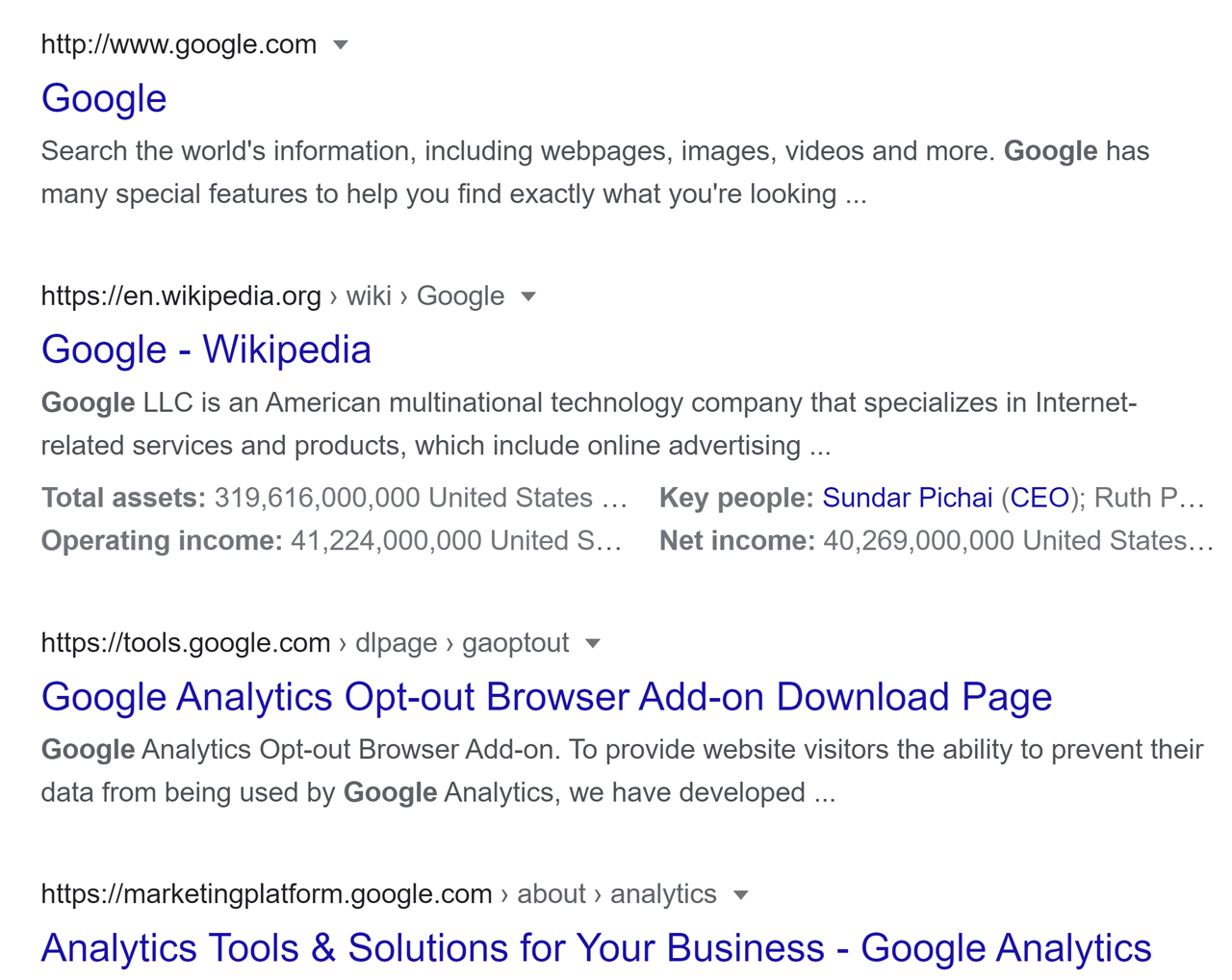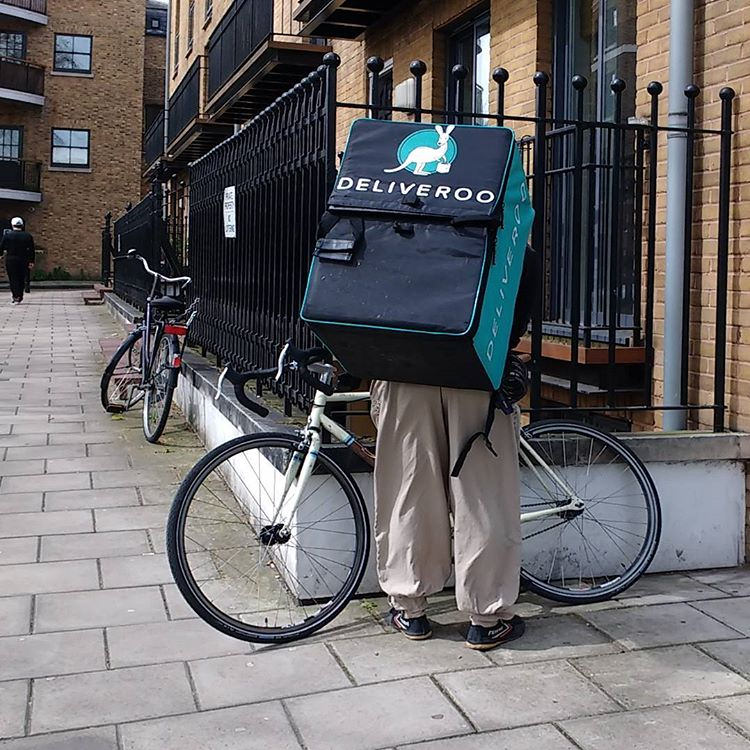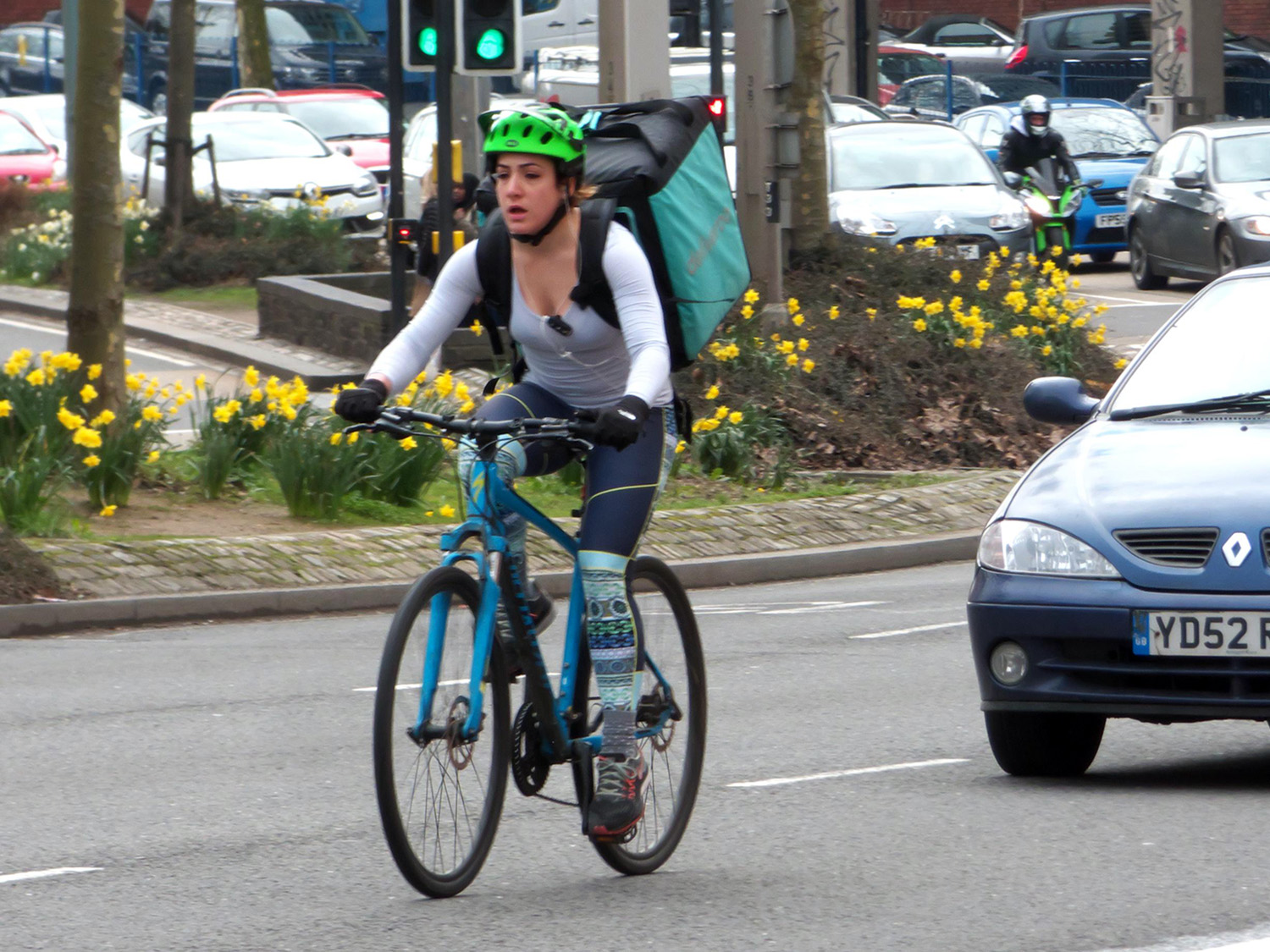 Competition authorities across the globe have recently been paying close attention to the activity of large firms in high-tech markets, in particular Google, Amazon, Facebook and Apple. One estimate suggests that 30 cases have been opened by the authorities since 2010, and a third of these were launched in 2020.
Competition authorities across the globe have recently been paying close attention to the activity of large firms in high-tech markets, in particular Google, Amazon, Facebook and Apple. One estimate suggests that 30 cases have been opened by the authorities since 2010, and a third of these were launched in 2020.
One of the most prominent recent cases in the US courts concerns a complaint made by Epic Games, producer of the popular Fortnite game, against Apple. The background to the case is Apple’s standard practice on its App Store of taking a 30% cut of all paid app and in-app purchases. Therefore, a Fortnite player purchasing $10 worth of in-game currency would result in $7 for Epic and $3 for Apple.
However, in August 2020 Epic decided, contrary to Apple’s terms and conditions, to offer players an alternative way to purchase in-game currency. Gamers would see a choice screen giving them the option to buy currency through the Apple App Store or to buy it directly from Epic. Crucially, purchasing directly from Epic would be cheaper. For example, the same $10 worth of in-game currency on the App Store would cost only $8 if purchased directly from Epic.
It is clear to see why Epic was in favour of direct payments – it earns revenue of $8 instead of $7. However, note that the benefits for gamers are even larger – they save $2 by buying directly. In other words, Epic is passing on 2/3 of the cost saving to consumers.
Apple very quickly responded to Epic’s introduction of the direct purchase alternative by removing Fortnite from the App Store. Epic then filed a complaint with the US District Court.
The Epic v Apple court case
The case concerned Apple restricting game developers’ ability to promote purchasing mechanisms outside the App Store. However, more broadly, it also examined Apple’s complete control of the iOS app market since all apps must be distributed through the Apple App Store. Epic had previously disrupted PC games distribution by launching its own platform with lower fees. The setup of iOS and Apple’s actions against Epic make this an impossible way to reach users.
 The Court’s analysis of the Epic v Apple case depended upon several key factors. First, the market definition. To be found to have breached competition law Apple must have a significant share of the market. If the market is defined as that for iOS apps, this is clearly the case. However, if, as Apple argues, it is broader, encompassing the options to play Epic games through web browsers, gaming consoles and PCs, then this is not the case.
The Court’s analysis of the Epic v Apple case depended upon several key factors. First, the market definition. To be found to have breached competition law Apple must have a significant share of the market. If the market is defined as that for iOS apps, this is clearly the case. However, if, as Apple argues, it is broader, encompassing the options to play Epic games through web browsers, gaming consoles and PCs, then this is not the case.
Second, even if the market is narrowly defined, Apple argues that its control of the app distribution market is essential to provide user friendly and secure provision of apps. Furthermore, revenue extracted from app producers can enable more investment in the iOS. Without Apple controlling the market, app producers would be able to free-ride on the visibility the App Store provides for their apps.
The ruling
The US Court announced its ruling on 10 September 2021. The judge decided that the market was broader than just iOS and thus Apple is not considered to be a monopolist. This has been touted as a major success for Apple, as it will allow the company to maintain its control of the app distribution market. However, the Court also ruled that Apple must allow game developers to link and direct users to alternative purchasing methods outside the App Store.
The Court’s decision in the Epic v Apple case closely follows concessions recently made by Apple for so called ‘reader apps’ such as Spotify and Netflix. Following an investigation by the Japanese authorities, these concessions allowed such apps to promote and receive purchases directly from consumers as long as they were made outside the app. These apps could be treated differently, as digital goods are consumed on multiple devices. However, the decision in the Epic case now extends such concessions to gaming apps.
It is unclear whether Apple will appeal the decision in the case Epic brought. If not, Apple stands to lose considerable revenue from its 30% share of in-app purchases. It will be very interesting to see how this ruling affects how Apple runs the App Store. Epic, on the other hand, has already made clear it will appeal the decision, aiming to prevent Apple gaining a share of any payment users make outside the app.
Matt Olczak and Jon Guest
Articles
Questions
- Why might a firm involved in a competition case, such as Apple, try to convince the authorities to define the relevant market as broadly as possible?
- Using the example of the Epic v Apple case, explain how Apple’s actions could be seen as both exclusionary and exploitative abuses of a dominant position.
 With the coronavirus pandemic having reached almost every country in the world, the impact on the global economy has been catastrophic. Governments have struggled balancing the spread of the virus and keeping the economy afloat. This has left businesses counting the costs of various control measures and numerous lockdowns. The crisis has particularly affected small and medium-sized enterprises (SMEs), causing massive job losses and longer-term economic scars. Among these is an increase in the market power held by dominant firms as they emerge even stronger while smaller rivals fall away.
With the coronavirus pandemic having reached almost every country in the world, the impact on the global economy has been catastrophic. Governments have struggled balancing the spread of the virus and keeping the economy afloat. This has left businesses counting the costs of various control measures and numerous lockdowns. The crisis has particularly affected small and medium-sized enterprises (SMEs), causing massive job losses and longer-term economic scars. Among these is an increase in the market power held by dominant firms as they emerge even stronger while smaller rivals fall away.
It is feared that with the full effects of the pandemic not yet realised, there may well be a wave of bankruptcies that will hit SMEs harder than larger firms, particularly in the most affected industries. Larger firms are most likely to be more profitable in general and more likely to have access to finance. Firm-level analysis using Orbis data, which includes listed and private firms, suggests that the pandemic-driven wave of bankruptcies will lead to increases in industry concentration and market power.
What is market power?
 A firm holds a dominant position if its power enables it to operate within the market without taking account of the reaction of its competitors or of intermediate or final consumers. The key role of competition authorities around the world is to protect the public interest, particularly against firms abusing their dominant positions.
A firm holds a dominant position if its power enables it to operate within the market without taking account of the reaction of its competitors or of intermediate or final consumers. The key role of competition authorities around the world is to protect the public interest, particularly against firms abusing their dominant positions.
The UK’s competition authority, the Competition and Markets Authority (CMA) states:
Market power arises where an undertaking does not face effective competitive pressure. …Market power is not absolute but is a matter of degree; the degree of power will depend on the circumstances of each case. Market power can be thought of as the ability profitably to sustain prices above competitive levels or restrict output or quality below competitive levels. An undertaking with market power might also have the ability and incentive to harm the process of competition in other ways; for example, by weakening existing competition, raising entry barriers, or slowing innovation.
It can be hard to distinguish between a rapidly growing business and growing concentration of market power. In a pandemic, these distinctions can become even more difficult to discern, since there really is a deep need for a rapid deployment of capital, often in distressed situations. It is also not always evident whether the attempt to grow is driven by the need for more productive capacity, or by the desire to engage in financial engineering or to acquire market power.
It may be the case that, as consumers, we simply have no choice but to depend on various monopolies in a crisis, hoping that they operate in the public interest or that the competition authorities will ensure that they do so. With Covid-19 for example, economies will have entered the pandemic with their existing institutions, and therefore the only way to operate may be through channels controlled by concentrated power. Market dominance can occur for what seem to be good, or least necessary, reasons.
Why is market power a problem?
 Why is it necessarily a problem if a successful company grows bigger than its competitors through hard work, smart strategies, and better technology adoption? It is important to recognise that increases in market power do not always mean an abuse of that market power. Just because a company may dominate the market, it does not mean there is a guaranteed negative impact on the consumer or industry. There are many advantages to a monopoly firm and, therefore, it can be argued that the existence of a market monopoly in itself should not be a cause of concern for the regulator. Unless there is evidence of past misconduct of dominance, which is abusive for the market and its stakeholders, some would argue that there is no justification for any involvement by regulators at all.
Why is it necessarily a problem if a successful company grows bigger than its competitors through hard work, smart strategies, and better technology adoption? It is important to recognise that increases in market power do not always mean an abuse of that market power. Just because a company may dominate the market, it does not mean there is a guaranteed negative impact on the consumer or industry. There are many advantages to a monopoly firm and, therefore, it can be argued that the existence of a market monopoly in itself should not be a cause of concern for the regulator. Unless there is evidence of past misconduct of dominance, which is abusive for the market and its stakeholders, some would argue that there is no justification for any involvement by regulators at all.
However, research by the International Monetary Fund concluded that excessive market power in the hands of a few firms can be a drag on medium-term growth, stifling innovation and holding back investment. Given the severity of the economic impact of the pandemic, such an outcome could undermine the recovery efforts by governments. It could also prevent new and emerging firms entering the market at a time when dynamism is desperately needed.
The ONS defines business dynamism as follows:
Business dynamism relates to measures of birth, growth and decline of businesses and its impact on employment. A steady rate of business creation and closure is necessary for an economy to grow in the long-run because it allows new ideas to flourish.
A lack of business dynamism could lead to a stagnation in productivity and wage growth. It also affects employment through changes in job creation and destruction. In this context, the UK’s most recent unemployment rate was 5%. This is the highest figure for five years and is predicted to rise to 6.5% by the end of 2021. Across multiple industries, there is now a trend of falling business dynamism with small businesses failing to break out of their local markets and start-up companies whose prices are undercut by a big rival. This creates missed opportunities in terms of growth, job creation, and rising incomes.
There has been a rise in mergers and acquisitions, especially amongst dominant firms, which is contributing to these trends. Again, it is important to recognise that mergers and acquisitions are not in themselves a problem; they can yield cost savings and produce better products. However, they can also weaken incentives for innovation and strengthen a firm’s ability to charge higher prices. Analysis shows that mergers and acquisitions by dominant firms contribute to an industry-wide decline in business dynamism.
Changes in market power due to the pandemic
The IMF identifies key indicators for market power, such as the percentage mark-up of prices over marginal cost, and the concentration of revenues among the four biggest players in a sector. New research shows that these key indicators of market power are on the rise. It is estimated that due to the pandemic, this increase in market dominance could now increase in advanced economies by at least as much as it did in the fifteen years to the end of 2015.
 Global price mark-ups have risen by more than 30%, on average, across listed firms in advanced economies since 1980. And in the past 20 years, mark-up increases in the digital sector have been twice as steep as economy-wide increases. Increases in market power across multiple industries caused by the pandemic would exacerbate a trend that goes back over four decades.
Global price mark-ups have risen by more than 30%, on average, across listed firms in advanced economies since 1980. And in the past 20 years, mark-up increases in the digital sector have been twice as steep as economy-wide increases. Increases in market power across multiple industries caused by the pandemic would exacerbate a trend that goes back over four decades.
It could be argued that firms enjoying this increase in market share and strong profits is just the reward for their growth. Such success if often a result of innovation, efficiency, and improved services. However, there are growing signs in many industries that market power is becoming entrenched amid an absence of strong competitors for dominant firms. It is estimated that companies with the highest mark-ups in a given year, have an almost 85 percent chance of remaining a high mark-up firm the following year. According to experts, some of these businesses have created entry barriers – regulatory or technology driven – which are incredibly high.
Professor Jayant R. Varma, a member of the MPC of the Reserve Bank of India (RBI), observed that in several sectors characterised by an oligopolistic core and a competitive periphery, the oligopolistic core has weathered the pandemic and it is the competitive periphery that has been debilitated. Rising profits and profit margins, improving capacity utilisation and lack of new capacity additions create ripe conditions for the oligopolistic core to start exercising pricing power.
The drivers and macroeconomic implications of such rises in market power are likely to differ across economies and individual industries. Even in those industries that benefited from the crisis, such as the digital sector, dominant players are among the biggest winners. The technology industry has been under the microscope in recent years, and increasingly the big tech firms are under scrutiny from regulators around the world. The market disruptors that displaced incumbents two decades ago have become increasingly dominant players that do not face the same competitive pressures from today’s would-be disruptors. The pandemic is adding to powerful underlying forces such as network effects and economies of scale and scope.
 A new regulator that aims to curb this increasing dominance of the tech giants has been established in the UK. The Digital Markets Unit (DMU) will be based inside the Competition and Markets Authority. The DMU will first look to create new codes of conduct for companies such as Facebook and Google and their relationship with content providers and advertisers. Business Secretary Kwasi Kwarteng said the regime will be ‘unashamedly pro-competition’.
A new regulator that aims to curb this increasing dominance of the tech giants has been established in the UK. The Digital Markets Unit (DMU) will be based inside the Competition and Markets Authority. The DMU will first look to create new codes of conduct for companies such as Facebook and Google and their relationship with content providers and advertisers. Business Secretary Kwasi Kwarteng said the regime will be ‘unashamedly pro-competition’.
Policy Responses
The additions in regulation in the UK fall in line with the guidance from the IMF. It recommends that adjustments to competition-policy frameworks need to be made in order to minimise the adverse effects of market dominance. Such adjustments must, however, be tailored to national circumstances, both in general and to address the specific challenges raised by the surge of the digital economy.
It recommends the following five actions:
- Competition authorities should be increasingly vigilant when enforcing merger control. The criteria for competition authorities to review a deal should cover all relevant cases – including acquisitions of small players that may grow to compete with dominant firms.
- Second, competition authorities should more actively enforce prohibitions on the abuse of dominant positions and make greater use of market investigations to uncover harmful behaviour without any reported breach of the law.
- Greater efforts are needed to ensure competition in input markets, including labour markets.
- Competition authorities should be empowered to keep pace with the digital economy, where the rise of big data and artificial intelligence is multiplying incumbent firms’ advantage. Facilitating data portability and interoperability of systems can make it easier for new firms to compete with established players.
- Investments may be needed to further boost sector-specific expertise amid rapid technological change.
Conclusion
The crisis has had a significant impact on all businesses, with many shutting their doors for good. However, there has been a greater negative impact on SMEs. Even in industries that have flourished from the pandemic, it is the dominant firms that have emerged the biggest winners. There is concern that the increasing market power will remain embedded in many economies, stifling future competition and economic growth. While the negative effects of increased market power have been moderate so far, the findings suggest that competition authorities should be increasingly vigilant to ensure that these effects do not become more harmful in the future.
Reviews of competition policy frameworks have already begun in some major economies. Young, high-growth firms that innovate and create high-quality jobs deserve a level playing field and a fair chance to succeed. Support directed to SMEs is important, as many small firms have been unable to benefit from government programmes designed to help firms access financing during the pandemic. Policymakers should act now to prevent a further, sharp rise in market power that could hold back the post-pandemic recovery.
Articles
Podcast
Official documents
Questions
- What are the arguments for and against the assistance of a monopoly?
- What barriers to entry may exist that prevent small firms from entering an industry?
- What policies can be implemented to limit market power?
- Define and explain market dynamism.
 Late last year I wrote a blog post describing how the UK Competition & Markets Authority (CMA) was looking into Amazon’s investment in online food delivery company Deliveroo. Through this investment Amazon would become a minority shareholder in Deliveroo and be able to participate in the management of the company.
Late last year I wrote a blog post describing how the UK Competition & Markets Authority (CMA) was looking into Amazon’s investment in online food delivery company Deliveroo. Through this investment Amazon would become a minority shareholder in Deliveroo and be able to participate in the management of the company.
At this time the CMA had completed its initial investigation and decided that it had concerns about the impact the investment would have on competition. Since Amazon and Deliveroo did not then offer any proposal to address these concerns, the CMA referred the case for a full-blown investigation. They were not expected to make a decision until June. However, earlier this month the CMA announced that they would provisionally clear the investment.
This decision is a result of the impact coronavirus pandemic has had on the UK economy. The lockdown in the UK has seen many of the restaurants Deliveroo previously delivered from temporarily shutting down. In response, Deliveroo has significantly expanded the online grocery store delivery part of its business. Despite this, it appears that overall the pandemic has significantly reduced their revenues. This will clearly have a significant impact on gig economy workers who, more generally, are particularly affected by the current circumstances (see the earlier post on this site).
 As a result of the pandemic, Deliveroo informed the CMA that they would go out of business without the investment from Amazon. This is very much in line with wider evidence of the impact the pandemic is already having on businesses. The CMA accepted that without additional funding Deliveroo would exit the market and that under the current circumstances it would be very difficult for them to secure an alternative source of funding. Furthermore, they regarded Deliveroo exiting the market as the worst outcome for competition, with Stuart McIntosh, Chair of the inquiry group, stating that:
As a result of the pandemic, Deliveroo informed the CMA that they would go out of business without the investment from Amazon. This is very much in line with wider evidence of the impact the pandemic is already having on businesses. The CMA accepted that without additional funding Deliveroo would exit the market and that under the current circumstances it would be very difficult for them to secure an alternative source of funding. Furthermore, they regarded Deliveroo exiting the market as the worst outcome for competition, with Stuart McIntosh, Chair of the inquiry group, stating that:
This could mean that some customers are cut off from online food delivery altogether, with others facing higher prices or a reduction in service quality. Faced with that stark outcome, we feel the best course of action is to provisionally clear Amazon’s investment in Deliveroo.
The unprecedented circumstances created by the coronavirus pandemic provide a clear justification for the approach the CMA has taken. However, in the long-run there may be adverse consequences for competition. For example, the reduction in competition in online grocery store delivery that the CMA originally feared may materialise. In addition, it will be interesting to see whether the effect the pandemic has on Deliveroo’s business makes it more likely that Amazon will look to fully acquire them.
Articles
Questions
- Distinguishing between the short and long run, how do you think the market would change if Deliveroo were to exit?
- Why do you think it would be difficult for Deliveroo to find alternative sources of funding at the current time?
- What trade-offs would the CMA have had to consider when deciding to clear Amazon’s investment?
 The online market for food delivery has grown rapidly grown in recent years. Deliveroo was founded in 2013 and has become one of the most recognised brands in this market. It now has a presence in around 100 towns and cities in the UK. In addition to offering customers restaurant cooked meals delivered straight to their homes, Deliveroo also provides a grocery store delivery service, for example in partnership with the Co-op.
The online market for food delivery has grown rapidly grown in recent years. Deliveroo was founded in 2013 and has become one of the most recognised brands in this market. It now has a presence in around 100 towns and cities in the UK. In addition to offering customers restaurant cooked meals delivered straight to their homes, Deliveroo also provides a grocery store delivery service, for example in partnership with the Co-op.
Despite Deliveroo’s strong brand, the market leader in online restaurant delivery is actually Just Eat. Just Eat’s business model is built on it acting as an intermediary between restaurants and consumers who can use Just Eat’s website or app to order take-aways. This is in contrast to Deliveroo which also provides the delivery service. This means that Just Eat’s service is more viable in smaller towns. Deliveroo’s other main rival is Uber Eats.
Having been founded in the UK, Deliveroo has subsequently expanded its operations to around 10 other countries. However, this global expansion resulted in Deliveroo making losses of almost £200m in 2017. In part as a result of these losses, Deliveroo decided to look for new investment and by May 2019 had raised £450m. Deliveroo intends to use this money to fund its continued international expansion and to improve the service it provides. This includes growing its delivery-only kitchens business, which enables it to be less reliant on links with traditional restaurants.
Amazon was one of the big investors in Deliveroo, although the exact amount it invested is unknown. Interestingly, both Amazon and Uber have previously made approaches to buy Deliveroo outright. For Amazon this latest move may be a first step before looking to fully acquire Deliveroo.
 Despite this not being a full merger or acquisition, it was still investigated by the UK Competition and Markets Authority (CMA). Its remit allows it also to examine situations where an enterprise gains a ‘material influence over the policy of another’. This was the case with Amazon’s investment which, despite only allowing it to become a minority shareholder, enables it to participate in the management of the company.
Despite this not being a full merger or acquisition, it was still investigated by the UK Competition and Markets Authority (CMA). Its remit allows it also to examine situations where an enterprise gains a ‘material influence over the policy of another’. This was the case with Amazon’s investment which, despite only allowing it to become a minority shareholder, enables it to participate in the management of the company.
Last week the CMA announced that it had completed its initial investigation and that it had concerns about the investment. Andrea Gomes de Silva, CMA Executive Director, stated that:
If the deal were to proceed in its current form, there’s a real risk that it could leave customers, restaurants and grocers facing higher prices and lower quality services as these markets develop. This is because the significant competition which could otherwise exist between Amazon and Deliveroo would be reduced.
The CMA has two specific concerns. Firstly, it is worried that competition in online restaurant delivery will be harmed. Amazon had started competing with Deliveroo in this market in 2016 when it launched Amazon Restaurants. However, it shut this down two years later. The CMA uncovered internal documents from Amazon suggesting that it continued to monitor closely this market. Therefore, the CMA believed that Amazon re-entering the market was a distinct possibility and argued that this would be a substantial boost for competition. The CMA’s concern was that its investment in Deliveroo would make this re-entry less likely.
On the other hand, there is a counterargument to the CMA’s which says that Amazon’s entry through investment, even if only at this time resulting in minority ownership of Deliveroo, could itself boost competition. This is an important trade-off the CMA should take into account.

Secondly, the CMA is worried that Amazon’s investment will also harm competition in online grocery store delivery. Here, Amazon and Deliveroo are two of the leading players in the market. The CMA believes that, as the market grows in the future, competition between the two could intensify. However, the investment in Deliveroo would put this in jeopardy.
At the time of writing, Amazon and Deliveroo have five working days to offer proposals to the CMA to address these competition concerns. It will be interesting to see how they respond to the CMA and whether a full-blown investigation follows. If it does, this may eventually lead to the CMA blocking Amazon’s investment.
POSTSCRIPT: Amazon and Deliveroo did not offer a proposal to address the competition concerns and so on 27th December the CMA referred the case for a full-blown investigation.
To be continued.
Articles
Questions
- What are the key features of competition in the online market for food delivery?
- What are the pros and cons of Just Eat’s business model in comparison with Deliveroo’s?
- What are the potential advantages Amazon has over the other players in the online market for food delivery?
 Economists are often criticised for making inaccurate forecasts and for making false assumptions. Their analysis is frequently dismissed by politicians when it contradicts their own views.
Economists are often criticised for making inaccurate forecasts and for making false assumptions. Their analysis is frequently dismissed by politicians when it contradicts their own views.
But is this fair? Have economists responded to the realities of the global economy and to the behaviour of people, firms, institutions and government as they respond to economic circumstances? The answer is a qualified yes.
Behavioural economics is increasingly challenging the simple assumption that people are ‘rational’, in the sense that they maximise their self interest by weighing up the marginal costs and benefits of alternatives open to them. And macroeconomic models are evolving to take account of a range of drivers of global growth and the business cycle.
 The linked article and podcast below look at the views of 2019 Nobel Prize-winning economist Esther Duflo. She has challenged some of the traditional assumptions of economics about the nature of rationality and what motivates people. But her work is still very much in the tradition of economists. She examines evidence and sees how people respond to incentives and then derives policy implications from the analysis.
The linked article and podcast below look at the views of 2019 Nobel Prize-winning economist Esther Duflo. She has challenged some of the traditional assumptions of economics about the nature of rationality and what motivates people. But her work is still very much in the tradition of economists. She examines evidence and sees how people respond to incentives and then derives policy implications from the analysis.
Take the case of the mobility of labour. She examines why people who lose their jobs may not always move to a new one if it’s in a different town. Partly this is for financial reasons – moving is costly and housing may be more expensive where the new job is located. Partly, however, it is for reasons of identity. Many people are attached to where they currently live. They may be reluctant to leave family and friends and familiar surroundings and hope that a new job will turn up – even if it means a cut in wages. This is not irrational; it just means that people are driven by more than simply wages.
Duflo is doing what economists typically do – examining behaviour in the light of evidence. In her case, she is revisiting the concept of rationality to take account of evidence on what motivates people and the way they behave.
 In the light of workers’ motivation, she considers the implications for the gains from trade. Is free trade policy necessarily desirable if people lose their jobs because of cheap imports from China and other developing countries where labour costs are low?
In the light of workers’ motivation, she considers the implications for the gains from trade. Is free trade policy necessarily desirable if people lose their jobs because of cheap imports from China and other developing countries where labour costs are low?
The answer is not a clear yes or no, as import-competing industries are only part of the story. If protectionist policies are pursued, other countries may retaliate with protectionist policies themselves. In such cases, people working in the export sector may lose their jobs.
She also looks at how people may respond to a rise or cut in tax rates. Again the answer is not clear cut and an examination of empirical evidence is necessary to devise appropriate policy. Not only is there an income and substitution effect from tax changes, but people are motivated to work by factors other than take-home pay. Likewise, firms are encouraged to invest by factors other than the simple post-tax profitability of investment.
Podcast
Article
Questions
- In traditional ‘neoclassical’ economics, what is meant by ‘rationality’ in terms of (a) consumer behaviour; (b) producer behaviour?
- How might the concept of rationality be expanded to take into account a whole range of factors other than the direct costs and benefits of a decision?
- What is meant by bounded rationality?
- What would be the effect on workers’ willingness to work more or fewer hours as a result of a cut in the marginal income tax rate if (a) the income effect was greater than the substitution effect; (b) the substitution effect was greater than the income effect? Would your answers to (a) and (b) be the opposite in the case of a rise in the marginal income tax rate?
- Give some arguments that you consider to be legitimate for imposing controls on imports in (a) the short run; (b) the long run. How might you counter these arguments from a free-trade perspective?
 Competition authorities across the globe have recently been paying close attention to the activity of large firms in high-tech markets, in particular Google, Amazon, Facebook and Apple. One estimate suggests that 30 cases have been opened by the authorities since 2010, and a third of these were launched in 2020.
Competition authorities across the globe have recently been paying close attention to the activity of large firms in high-tech markets, in particular Google, Amazon, Facebook and Apple. One estimate suggests that 30 cases have been opened by the authorities since 2010, and a third of these were launched in 2020.  The Court’s analysis of the Epic v Apple case depended upon several key factors. First, the market definition. To be found to have breached competition law Apple must have a significant share of the market. If the market is defined as that for iOS apps, this is clearly the case. However, if, as Apple argues, it is broader, encompassing the options to play Epic games through web browsers, gaming consoles and PCs, then this is not the case.
The Court’s analysis of the Epic v Apple case depended upon several key factors. First, the market definition. To be found to have breached competition law Apple must have a significant share of the market. If the market is defined as that for iOS apps, this is clearly the case. However, if, as Apple argues, it is broader, encompassing the options to play Epic games through web browsers, gaming consoles and PCs, then this is not the case.  With the coronavirus pandemic having reached almost every country in the world, the impact on the global economy has been catastrophic. Governments have struggled balancing the spread of the virus and keeping the economy afloat. This has left businesses counting the costs of various control measures and numerous lockdowns. The crisis has particularly affected small and medium-sized enterprises (SMEs), causing massive job losses and longer-term economic scars. Among these is an increase in the market power held by dominant firms as they emerge even stronger while smaller rivals fall away.
With the coronavirus pandemic having reached almost every country in the world, the impact on the global economy has been catastrophic. Governments have struggled balancing the spread of the virus and keeping the economy afloat. This has left businesses counting the costs of various control measures and numerous lockdowns. The crisis has particularly affected small and medium-sized enterprises (SMEs), causing massive job losses and longer-term economic scars. Among these is an increase in the market power held by dominant firms as they emerge even stronger while smaller rivals fall away. A firm holds a dominant position if its power enables it to operate within the market without taking account of the reaction of its competitors or of intermediate or final consumers. The key role of competition authorities around the world is to protect the public interest, particularly against firms abusing their dominant positions.
A firm holds a dominant position if its power enables it to operate within the market without taking account of the reaction of its competitors or of intermediate or final consumers. The key role of competition authorities around the world is to protect the public interest, particularly against firms abusing their dominant positions. Why is it necessarily a problem if a successful company grows bigger than its competitors through hard work, smart strategies, and better technology adoption? It is important to recognise that increases in market power do not always mean an abuse of that market power. Just because a company may dominate the market, it does not mean there is a guaranteed negative impact on the consumer or industry. There are many advantages to a monopoly firm and, therefore, it can be argued that the existence of a market monopoly in itself should not be a cause of concern for the regulator. Unless there is evidence of past misconduct of dominance, which is abusive for the market and its stakeholders, some would argue that there is no justification for any involvement by regulators at all.
Why is it necessarily a problem if a successful company grows bigger than its competitors through hard work, smart strategies, and better technology adoption? It is important to recognise that increases in market power do not always mean an abuse of that market power. Just because a company may dominate the market, it does not mean there is a guaranteed negative impact on the consumer or industry. There are many advantages to a monopoly firm and, therefore, it can be argued that the existence of a market monopoly in itself should not be a cause of concern for the regulator. Unless there is evidence of past misconduct of dominance, which is abusive for the market and its stakeholders, some would argue that there is no justification for any involvement by regulators at all.  Global price mark-ups have risen by more than 30%, on average, across listed firms in advanced economies since 1980. And in the past 20 years, mark-up increases in the digital sector have been twice as steep as economy-wide increases. Increases in market power across multiple industries caused by the pandemic would exacerbate a trend that goes back over four decades.
Global price mark-ups have risen by more than 30%, on average, across listed firms in advanced economies since 1980. And in the past 20 years, mark-up increases in the digital sector have been twice as steep as economy-wide increases. Increases in market power across multiple industries caused by the pandemic would exacerbate a trend that goes back over four decades.  A new regulator that aims to curb this increasing dominance of the tech giants has been established in the UK. The
A new regulator that aims to curb this increasing dominance of the tech giants has been established in the UK. The 
 Late last year I wrote a blog
Late last year I wrote a blog  As a result of the pandemic, Deliveroo informed the CMA that they would go out of business without the investment from Amazon. This is very much in line with wider
As a result of the pandemic, Deliveroo informed the CMA that they would go out of business without the investment from Amazon. This is very much in line with wider  The online market for food delivery has grown rapidly grown in recent years. Deliveroo was founded in 2013 and has become one of the most recognised brands in this market. It now has a presence in around 100 towns and cities in the UK. In addition to offering customers restaurant cooked meals delivered straight to their homes, Deliveroo also provides a grocery store delivery service, for example in partnership with the Co-op.
The online market for food delivery has grown rapidly grown in recent years. Deliveroo was founded in 2013 and has become one of the most recognised brands in this market. It now has a presence in around 100 towns and cities in the UK. In addition to offering customers restaurant cooked meals delivered straight to their homes, Deliveroo also provides a grocery store delivery service, for example in partnership with the Co-op.
 Economists are often criticised for making inaccurate forecasts and for making false assumptions. Their analysis is frequently dismissed by politicians when it contradicts their own views.
Economists are often criticised for making inaccurate forecasts and for making false assumptions. Their analysis is frequently dismissed by politicians when it contradicts their own views.  The linked article and podcast below look at the views of 2019
The linked article and podcast below look at the views of 2019  In the light of workers’ motivation, she considers the implications for the gains from trade. Is free trade policy necessarily desirable if people lose their jobs because of cheap imports from China and other developing countries where labour costs are low?
In the light of workers’ motivation, she considers the implications for the gains from trade. Is free trade policy necessarily desirable if people lose their jobs because of cheap imports from China and other developing countries where labour costs are low?